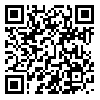

Volume 12, Issue 1 (4-2014)
RBS 2014, 12(1): 112-121 |
Back to browse issues page
Download citation:
BibTeX | RIS | EndNote | Medlars | ProCite | Reference Manager | RefWorks
Send citation to:



BibTeX | RIS | EndNote | Medlars | ProCite | Reference Manager | RefWorks
Send citation to:
روزبهاني م, واعظ موسوي س م ك, خلجي ح. Learning of a hand movement patterns in 8-10 years old children. RBS 2014; 12 (1) :112-121
URL: http://rbs.mui.ac.ir/article-1-366-en.html
URL: http://rbs.mui.ac.ir/article-1-366-en.html
1- استاد، دانشكده تربيت بدني و علوم ورزشي، دانشگاه امام حسين، تهران، ايران
2- دانشيار، دانشكده تربيت بدني و علوم ورزشي، دانشگاه اراك، اراك، ايران
2- دانشيار، دانشكده تربيت بدني و علوم ورزشي، دانشگاه اراك، اراك، ايران
Abstract: (3265 Views)
Abstract Aim and Background: The purpose of this study was to determine the effect of three different feedback methods to learning of temporal-special coordination hand movement task. Methods and Materials: 30 Children (8-10 ages) according to receiving feedback (100 percent, omitted, self-control) randomly divided to three groups. This study was done in three days. In the first and second days all subjects practice 100 trails movement task. Retention tests were done in second and third days and reacquisition test was done in the third day. Finding: For acquisition and retention phases analysis of variance (ANOVA) with repeated measures was used. All participants in the first day improved accuracy across practice trials but in the second day did not improve their accuracy across practice trials. There was no significant difference between retention tests that showed 100 practice trials that have been done in the second day did not improve participants learning. During the retention tests 100 percent feedback group was significantly better than omitted group. One way ANOVA was used to analysis reacquisition test that showed 100 percent feedback group was significantly better than omitted group. Conclusions: Results from this study showed receiving more feedback can improve motor learning in children (in contrast with guidance hypothesis) and motor skill acquisition in children not occur as fast as young people.
| Rights and permissions | |
 |
This work is licensed under a Creative Commons Attribution-NonCommercial 4.0 International License. |



